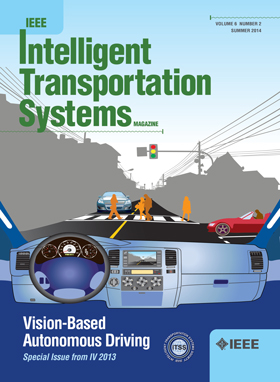Optimal Sequential Merging Strategy Based on Adaptive Threshold for Ramp Traffic Involving Platoons
IF 7.9
1区 工程技术
Q1 ENGINEERING, CIVIL
IEEE Transactions on Intelligent Transportation Systems
Pub Date : 2025-02-04
DOI:10.1109/TITS.2025.3534717
引用次数: 0
Abstract
The platoon technology is gradually applied in the intelligent transportation systems to improve the safety, efficiency, energy saving, and emission reduction of vehicles during driving. However, in contrast to the traditional ramp merging scenario that consists of individual vehicles, the existing platoons from the upstream bring new challenges to the merging problem on ramps. Without an effective coordination strategy, the unnecessary congestion and disintegration of the existing platoons will lead to an increase in driving costs and safety risk. Therefore, this paper optimizes the merging strategy of vehicle sequences involving platoons on highway ramps. A merging strategy, based on an adaptive headway threshold, is first proposed, where the comprehensive economic benefit is considered as its optimization objective while taking into account the decrements of the time, fuel, and carbon emission costs. The vehicle sequence merging is then modeled as a Markov decision process to derive the optimal threshold, where the action set includes three actions: accelerating, decelerating, and maintaining the constant cruising speed. Afterwards, the constraints are brought to the decision-making to ensure the safety of the merging process. The calculation of the action value, combining the derived optimal threshold and constraint, is then detailed. Finally, the results of the simulation are evaluated, and a comparison between the proposed strategy and other existing methods is conducted, which demonstrates that the proposed approach improves the comprehensive economic benefits.基于自适应阈值的匝道队列交通最优顺序合并策略
在智能交通系统中逐步应用队列技术,提高车辆行驶过程中的安全、高效、节能、减排。然而,与传统的由单个车辆组成的匝道合流方案不同,来自上游的现有队列给匝道合流问题带来了新的挑战。如果没有有效的协调策略,现有队列不必要的拥挤和解体将导致驾驶成本和安全风险的增加。为此,本文对匝道上涉及队列的车辆序列合并策略进行优化。首先提出了一种基于自适应车头距阈值的合并策略,以综合经济效益为优化目标,同时考虑时间、燃料和碳排放成本的减少。然后将车辆序列合并建模为马尔可夫决策过程,导出最优阈值,其中动作集包括加速、减速和保持恒定巡航速度三个动作。然后对并购决策进行约束,保证并购过程的安全性。结合导出的最优阈值和约束,详细计算了动作值。最后,对仿真结果进行了评价,并与其他现有方法进行了比较,表明该方法提高了综合经济效益。
本文章由计算机程序翻译,如有差异,请以英文原文为准。
求助全文
约1分钟内获得全文
求助全文
来源期刊

IEEE Transactions on Intelligent Transportation Systems
工程技术-工程:电子与电气
CiteScore
14.80
自引率
12.90%
发文量
1872
审稿时长
7.5 months
期刊介绍:
The theoretical, experimental and operational aspects of electrical and electronics engineering and information technologies as applied to Intelligent Transportation Systems (ITS). Intelligent Transportation Systems are defined as those systems utilizing synergistic technologies and systems engineering concepts to develop and improve transportation systems of all kinds. The scope of this interdisciplinary activity includes the promotion, consolidation and coordination of ITS technical activities among IEEE entities, and providing a focus for cooperative activities, both internally and externally.
 求助内容:
求助内容: 应助结果提醒方式:
应助结果提醒方式:


